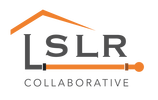|
Water Online See the original article It has been 32 years since the amended Safe Drinking Water Act (SDWA) banned the installation of lead pipes in water systems nationwide. Unfortunately, that decision has not yet translated into action for every lead service line (LSL) installed before that point. Fortunately, someone has done a lot of legwork toward getting a handle on that process. Here is a preview of the help they have to offer. Identifying The Scope Of The Problem As much as has been learned about the effects of lead in drinking water as a result of the Flint, MI water crisis, progress toward eliminating the causes has been slow — in part relating to delays in the U.S. EPA finalizing long-term revisions to the Lead and Copper Rule (LCR). Complying with the requirements of the LCR, however, is just a first step toward dealing with the problem. This executive report on the contribution of service lines and plumbing fixtures to lead and copper compliance issues concludes: “Corrosion control treatment is likely still the best and most cost-effective way to comply with the requirements of the LCR. However, the consumer’s portion of the lead service line, which is beyond the jurisdiction of local water utilities, remains an important unresolved source of lead. The most effective way to reduce the total mass of lead measured at the tap is to replace the entire lead service line, followed by replacement of lead sources in the premise piping, the faucet, and then the meter.” Industry groups have picked up the ball, but much remains to be done to get it across the goal line. It has been two years without a final determination since the last EPA white paper. Fortunately, other influences in the water industry are moving forward.
The Environmental Defense Fund has identified a number of U.S. cities that have made concerted efforts to document the locations of lead service lines. This interactive map of Pittsburgh is one example. The Lead Service Line Replacement (LSLR) Collaborative has devoted an entire website to the issue, offering numerous insights about the problem and links to resources needed to fight it. It’s Easier To Follow A Blazed Path The LSLR Collaborative is dedicated to speeding up the process of voluntary lead service line replacement. It is a mutual effort among more than two dozen utility, health, environmental, consumer, and governmental organizations. This includes industry-respected groups such as the American Water Works Association (AWWA), RESOLVE, the Association of Metropolitan Water Agencies (AMWA), CleanWater.org, Children’s Environmental Health Network (CEHN), the Environmental Defense Fund (EDF), the National Rural Water Association (NRWA), and the Rural Community Assistance Partnership (RCAP). Here is a cross-section of the resources the Collaborative has to offer:
Of Course, It Takes Money As with so many other infrastructure replacement tasks, the risks are typically well identified but the funding solutions are not. Fortunately, the LSLR website includes a guidance document that covers multiple approaches to funding. That document also links to specific federal funding resources for LSL replacement available through:
When investigating those resources, be sure to review the specific criteria for each source, which can vary in terms of eligibility, funding priorities, application requirements, and the availability of principal forgiveness. Various state and local community and utility funding programs are also available. Comments are closed.
|
Have a suggestion for an article or blog to add?
Let us know! Type
All
Date
April 2023
|


 RSS Feed
RSS Feed